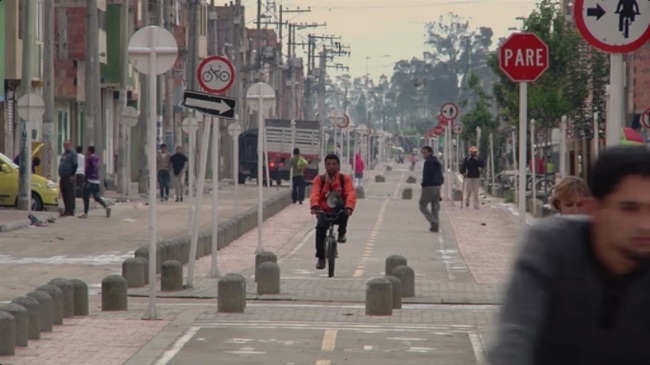Surrealism is defined as “a 20th-century avant-garde movement in art and literature that sought to release the creative potential of the unconscious mind…” This is relevant to John Mayows conception of the 17th century “iron lung”. The Idea of “Lateral Imagination” entails taking steps beyond tradition in order to conceive of things that are limited by traditional ways of thinking. Mayows transcended the traditional functions of objects which enabled the creation of a device that wouldn’t have been possible if he only used traditional ideas.
“Literal Thinking”, by comparison, uses this same principle to circumvent limitations of traditional thought. Edward de Bono has been extremely successful in implementing new types of ‘thinking’ all over the world. He defines “Literal Thinking” as “the process of using information to bring about creativity and insight restructuring”. This is extremely relevant to Dan Barber’s ted talk. America’s agriculture industry is sidetracked by economic incentive: basically, trying to make things as cheap and easy as possible. Rather than building off this corrupt infrastructure, he proposes (similarly to de Bono) to rethink the framework of the agricultural system, “restructuring the insight” used to implement successful fish farms. This is all a major part of ‘design thinking’, as finding new approaches to solve physical world issues.
Successful urban planning would greatly benefit from this kind of thinking. As a design outlet largely dependent on its users, a design for a city plan needs to be extremely informed by actual information and insight that will assist in successful implementation. There are instances around the world of citys that have been constructed and utterly failed for one reason or the other.
For example: China’s ghost cities (http://www.youtube.com/watch?v=V3XfpYxHKCo – if you’re interested in further information) China’s government built intricate cities on the premise of giving workers things to do, a.k.a. as a means to stimulate the economy, a.k.a. a completely ill-informed design implementation. So currently China has these ghost cities that exist void of any actual function.
To contrast with this, the city renovations in Bogota, Colombia (Documentary: Urbanized covers this very nicely) The local jurisdiction of Bogota looked towards European cities like Copenhagen to inform their design decisions to renovate city transportation with both bicycle transportation and bus systems.
Rather than just utilizing traditional thought and continuing to develop the highways and/or automotive industry, Bogota initiated a switch to a much more sustainable mode of transportation that will influence the area in a sustainable way for generations to come. This kind of “lateral imagination”, or “literal thinking” needs to be utilized in any instance involved the public masses, as urban planning does.
Response from Fatima:
It is interesting how you implemented lateral thinking to urbanism. After reading a couple of the responses I realized that lateral thinking can be implemented in all types of problems. Going of your central topic of Urban Planning I feel like there is a lot of mimicry and not a lot of thinking. Maybe a system of roads and organization works in one city but it might or might not work in another city. The pattern of a city mainly depends on the day-to-day living of the population and its culture.
An interesting example of lateral thinking in Urbanism is Kowloon, Hong Kong. It was a walled ungoverned “city.” It was originally a military for but after World War II its population extremely increased and it became something similar to a vertical slum. However it belonged to anyone. The population that lived there had to define and learn and think of an organized system of living that could work for the more than 35,000 people that lived there. This walled city had every they needed and the people that lived there did not have to leave the “wall” to get food, entertainment, etc. It might not look like a systematic pattern however there are orders of hierarchy that surround the premise.
Response from Jerry:
Very interesting. I have heard of the ghost cities in china but never paid much attention to why they were that way. The video you posted explains that much of the rapid mindless urbanization done in china is due to governors being heavy headed in “one-upping” western civilization. They see what the western world is doing with urbanization, and rather than learn from their own patterns of living, they copy it. This introduces a different style of living to what they already are used to – Forcing their citizens to adapt to a new form of living. For example: the farmers on the video whose houses were being demolished to make room for high-rise apartments. This ties with what de Bono mention on the interview article; for his methodology of higher thinking (6 hats thinking) to be taken in effectively, the minds of the hierarchy need to open. In my opinion, open mindedness seems to be what is lacking in china’s new age urbanization.
Response from Chloe:
When I first learned about those ghost towns in China it completely blew my mind. Crazy. So crazy. And I love urbanized. I think it shows some great examples of how governments can help with urban planning and change.
I completely agree that urban design needs an update. I lived in Copenhagen last semester and their urban planning is amazingly efficient. Over half of people bike to work, and bike lanes are just as big, or in some instances bigger, than the portion of the road for cars. And their public transportation takes you almost everywhere (working on it at least). BUT stemming off of what Fatima said, applying what worked there would not always work in other locations. Trying to push a biking culture in insanely hilly Lawrence just isn’t going to work. Designers need to be site specific with their urban planning, which seems like an obvious thing but its not. Identical suburbs all over the United States are a great example of this.



